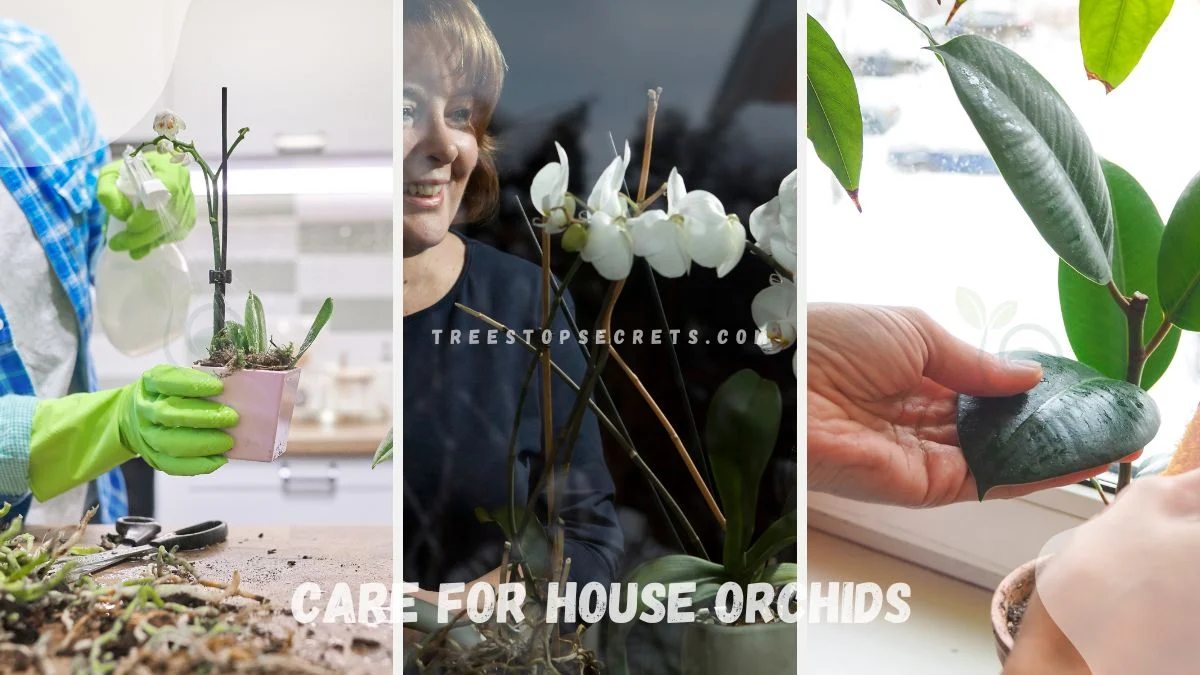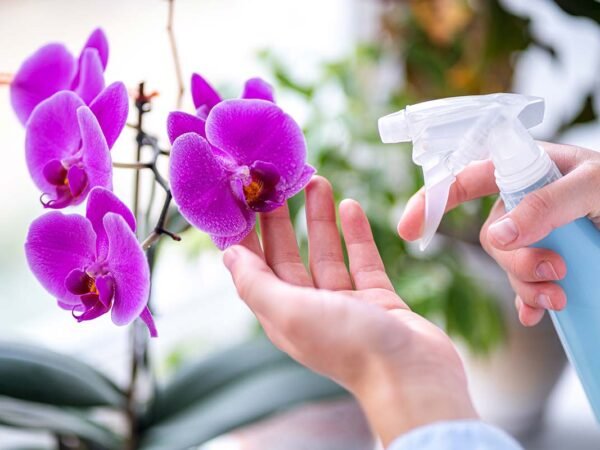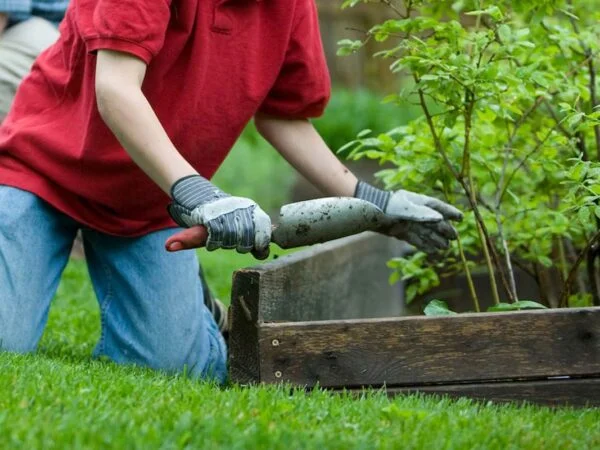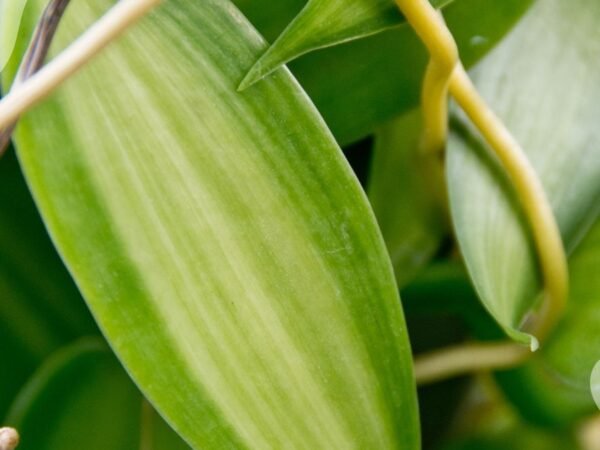Caring for house orchids doesn't have to be daunting. With the right knowledge, anyone can enjoy these elegant and exotic plants at home. From watering to light conditions and proper repotting techniques, I’ll guide you through the essentials of orchid care, ensuring your plants thrive and bloom beautifully. Whether you’re a beginner or looking to enhance your orchid skills, these insights will help you maintain a healthy, vibrant orchid collection indoors.
To care for house orchids effectively, focus on three key areas: light, watering, and humidity. Orchids generally thrive in bright, indirect sunlight. Water them once a week, allowing the potting mix to dry slightly between waterings. Ensure proper drainage to prevent root rot. Maintain humidity around 50-70%, using a humidity tray or misting the air if needed. Fertilize orchids every 2-4 weeks with a balanced, water-soluble fertilizer. These basic care tips will help your orchids flourish.
| Aspect | Recommendation |
|---|---|
| Light | Bright, indirect sunlight |
| Watering | Weekly, with proper drainage |
| Humidity | 50-70%, use trays or misting |
| Fertilizing | Every 2-4 weeks |
For more detailed advice on orchids, including specific species tips and troubleshooting common issues, explore additional resources and expert guides. Your orchids will thank you!
Key Takeaways
- Understanding Orchid Basics: Start by familiarizing yourself with the fundamental needs of orchids, such as light, water, and air circulation.
- Ideal Growing Conditions: Create a suitable environment for your orchids by providing adequate light, humidity, and temperature levels.
- Nourishing Your Orchids: Feed your orchids with a balanced fertilizer to support healthy growth and vibrant blooms.
- Repotting Essentials: Know when and how to repot your orchids to ensure they have ample space for root growth and proper drainage.
- Maintenance and Care: Regularly inspect your orchids for pests, diseases, and watering needs to maintain their overall health and beauty.
- Health and Troubleshooting: Address any issues promptly by identifying common orchid problems like yellowing leaves or root rot to keep your plants thriving.
Understanding Orchid Basics
Orchid Quick Facts
Orchids come in various species, each requiring specific care. Basic care includes proper light, water, and temperature. Interesting facts about orchids make them fascinating plants.
The Golden Rule
To ensure healthy orchids, mimic their natural environment. Provide adequate light, water, and temperature. Use the right soil and fertilizer for optimal growth.
Different Types
Discover a wide range of orchid species with unique traits. Popular indoor varieties include Phalaenopsis and Dendrobium. Care requirements vary among different orchid types.
Ideal Growing Conditions
Light Requirements
Orchids have specific light needs depending on their variety. Meeting these needs is crucial for preventing blooming issues. Creating a suitable light environment involves providing anything from filtered to direct light.
Optimal Temperature
Different orchids, categorized as cool, intermediate, or warm-growing, have distinct temperature preferences. To replicate natural conditions, it's essential to offer seasonal temperature variations. Orchids must receive the right daytime and nighttime temperatures.
Proper Watering
Prevent overwatering by allowing the growing medium to dry out between waterings. Adjust watering frequency based on factors like growth stage and pot size. Enhancing humidity levels can be achieved through methods such as misting or using a water-filled tray.
Nourishing Your Orchids
When to Fertilize
Fertilizing is crucial for encouraging orchids to bloom and thrive. Establish a regular schedule during active growth periods to support their development. Utilize water-soluble orchid-specific fertilizers for the best outcomes.
Choosing Fertilizer
Select a water-soluble fertilizer designed for orchids to provide them with essential nutrients. Consider the specific requirements of orchids when deciding on a fertilizer. Ensure that the fertilizer is suitable for the growth stage of your orchid plants.
Repotting Essentials
When to Repot
Recognize signs of overgrown roots, such as roots growing over the pot's edge or out of drainage holes. Monitor for dry and crumbling potting medium, indicating the need for repotting.
Understand the importance of repotting to refresh the orchid's medium, promoting better nutrient absorption and root health. Proper repotting prevents root suffocation and aids in overall plant growth.
Follow techniques like gently removing the orchid from its current pot, trimming dead roots, and placing it in a new pot with fresh medium. Ensure not to damage the delicate roots during the repotting process.
Selecting Potting Medium
Choose a well-draining potting medium to prevent waterlogging and root rot. Opt for mediums that provide good aeration and moisture retention to support healthy root growth.
Consider factors like the orchid type, environment humidity, and watering habits when selecting a suitable potting medium. Different orchids may require specific mediums for optimal growth.
Opt for mediums such as bark, sphagnum moss, or perlite based on the orchid species. Bark is ideal for epiphytic orchids, while sphagnum moss retains moisture well for terrestrial varieties.
Maintenance and Care
Pruning Techniques
Pruning orchids is essential for maintaining their health and appearance. Remove any dead or damaged parts to promote new growth. Sterilize your tools before pruning to prevent the spread of diseases.
Encouraging Rebloom
To encourage orchids to rebloom, provide proper care after flowering. Light, temperature, and fertilization play crucial roles in promoting reblooming. Implement strategies that support future flowering cycles.
Propagation Simplified
Simplify orchid propagation by exploring methods like division and keiki propagation. Understand the steps involved in successfully propagating orchids. Learning these techniques can help expand your collection of healthy orchids.
Health and Troubleshooting
Common Problems
House orchids often face common issues such as overwatering, which can lead to root rot. Inadequate light is another challenge that results in yellowing leaves. To address these problems, adjust watering frequency and ensure proper light exposure for healthy orchid growth. Implement solutions like repotting in well-draining soil to combat root rot effectively.
Dealing with Pests
Recognize common pests like aphids and spider mites that can harm orchids. To control these pests, use natural remedies such as neem oil or insecticidal soap. Regularly monitor your orchids to detect pests early and prevent infestations. By maintaining a clean environment and proper ventilation, you can protect your orchids from harmful insects.
Reviving Sick Orchids
Identify signs of distress in orchids, such as wilting leaves or stunted growth, indicating poor health. Take immediate action by adjusting watering habits and providing adequate light to revive sick orchids. Seek guidance from experts or reliable resources on orchid care to determine the best course of action for reviving unhealthy plants. With proper care and attention, sick orchids can recover and thrive again.
Closing Thoughts
You've now mastered the art of caring for your house orchids. By understanding their basics, creating ideal growing conditions, nourishing them properly, repotting when needed, and maintaining their health, you're well-equipped to ensure your orchids thrive. Remember to troubleshoot any issues promptly to keep your plants happy and blooming. Your dedication will be rewarded with stunning blossoms and a vibrant indoor garden.
Now, it's time to put your knowledge into action. Take a moment to check on your orchids, assess their needs, and make any adjustments required. Share your newfound expertise with fellow plant enthusiasts and continue to expand your orchid care skills. With your commitment and know-how, you'll enjoy a beautiful display of orchid blooms all year round.
Frequently Asked Questions
How do I understand the basics of caring for orchids?
To care for orchids, understand their light, water, and temperature needs. Use well-draining potting mix and fertilize regularly during the growing season. Monitor for pests and diseases.
What are the ideal growing conditions for house orchids?
House orchids thrive in bright, indirect light. Maintain temperatures between 60-80°F during the day and slightly cooler at night. Provide high humidity levels and good air circulation.
How can I nourish my orchids effectively?
Feed your orchids with a balanced fertilizer specifically formulated for orchids. Dilute the fertilizer to half-strength and apply every 2-4 weeks during the growing season. Adjust feeding frequency based on plant growth.
When is it essential to repot orchids?
Repot orchids every 1-2 years or when you notice overcrowded roots, poor drainage, or decaying potting medium. Choose a new container that allows for proper root growth and use fresh orchid potting mix.
What maintenance and care practices should I follow for healthy orchids?
Regularly inspect your orchids for signs of pests, diseases, or stress. Water them only when the potting mix feels dry to the touch. Prune dead flowers and yellowing leaves to encourage new growth.
How can I troubleshoot common health issues with my house orchids?
Yellowing leaves may indicate overwatering, while wrinkled leaves suggest underwatering. Brown spots could be due to sunburn or fungal infections. Adjust watering, lighting, and ventilation to address these issues promptly.
Image Source: Paid image from CANVA





